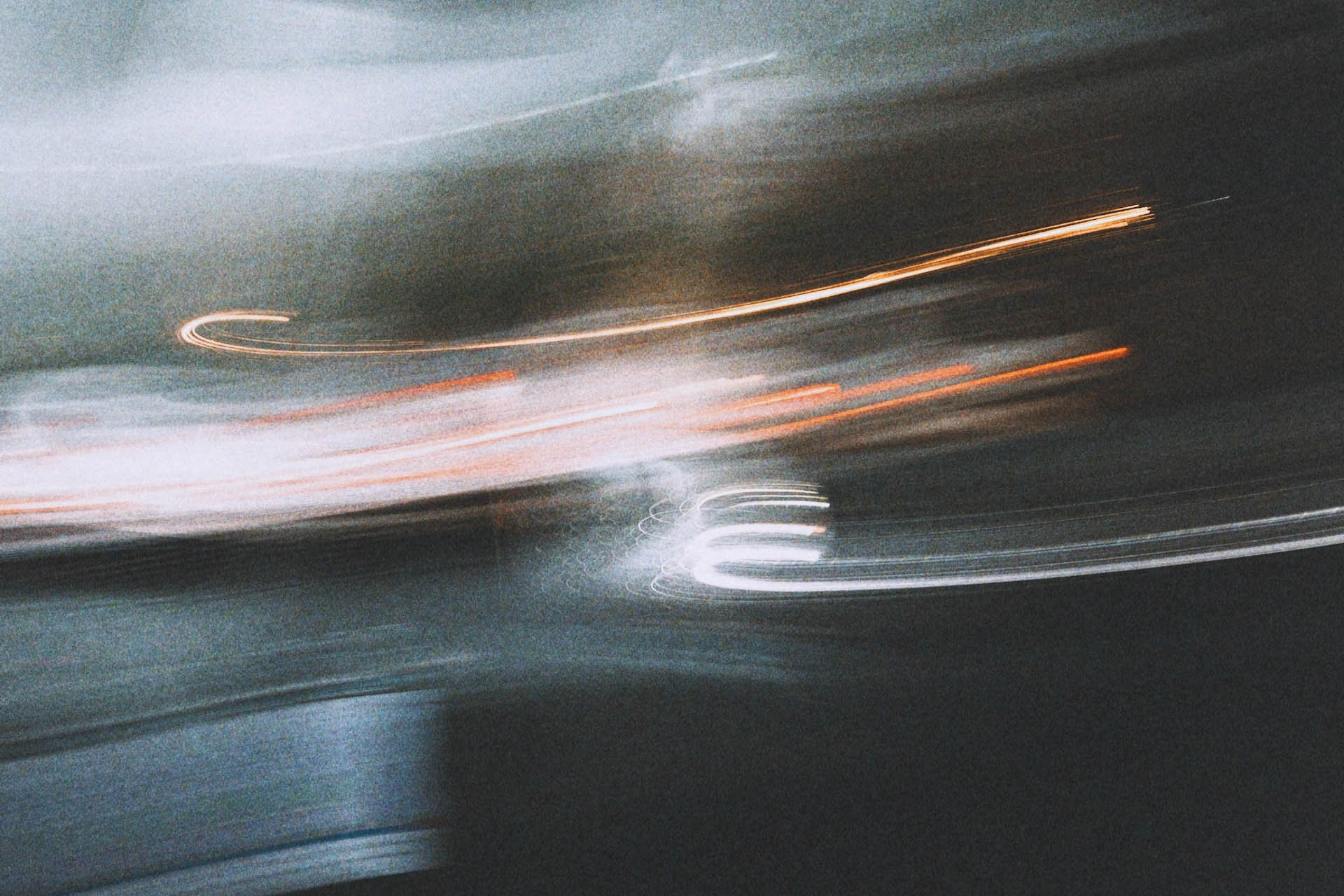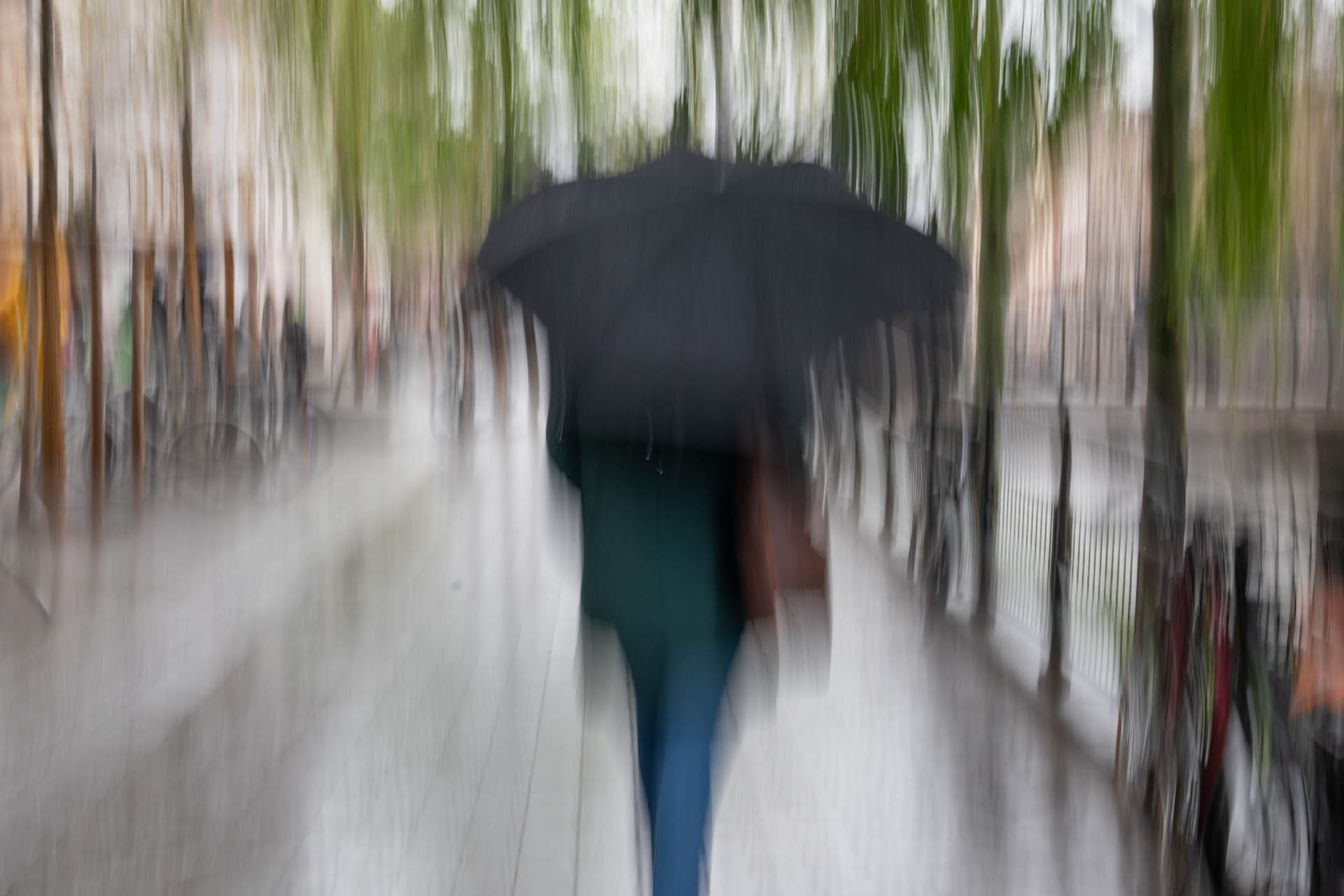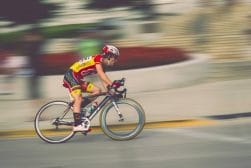
How to Use Intentional Camera Movement (ICM) in Photography
A beginner's guide to Intentional Camera Movement photography (ICM), the art of using camera movement to create artistic blur.
Learn | Photography Guides | By Ana Mireles
If you like ICM (intentional camera movement) photography, this article is for you.
I love the painterly look of ICM images. Many compare this technique with moving the camera as if you were doing brushstrokes on a canvas.
If you’re intrigued by the idea, or you’ve already experimented with it and want to improve – you’ll find some helpful information here.
In this article, I’ll talk about what ICM is, when it started, and which artists have used it in their work. This should help your inspiration.
I’ll also talk about the technical part – the camera gear, the settings, and some tips to improve your results.
If you’re as pumped as I am, let’s get started!
What is Intentional Camera Movement in Photography?

Credit: Aedrian
ICM – Intentional camera movement is a photographic technique. It allows you to create an artistic effect by moving the camera during exposure. By doing it, the resulting image has a painterly effect.
In fact, many photographers specialising in ICM images are highly influenced by painting movements such as impressionism.
Some of the first experiments of intentional camera movement in art date to the 1930s by the artists of Futurism. One of the most notable examples is Futurist Photo-dynamism.
Masoero Filippo, for example, did aerial photography using intentional camera movement. He did this by using a long exposure in free fall.
Since then, many photographers have experimented with and perfected this technique. Digital photography has made it more accessible as you can see the result immediately and make adjustments on the spot.
How Is Intentional Camera Movement Done in Photography?
Doing ICM – intentional camera movement has fewer rules than traditional photography. This is because it’s more about experimentation.
The ICM technique is a combination of shutter speed and movement. The combination of these two factors is what will ultimately determine your own style.
So, to do intentional camera movement, you need to use a shutter speed long enough to capture motion blur.
There isn’t a right or wrong shutter speed value. The right one depends on the effect you want to achieve and the main subject you want to capture.
Once you determine the exposure length, you can adjust the rest of the camera settings. If the shutter speed is too long and there’s too much light, you may need to use filters to control the amount of light entering the camera.
You can try different shutter speeds and movements to see which create the most interesting images.
What Camera Gear is Needed for Intentional Camera Movement Photography?

Credit: Foad Roshan
You don’t need much camera equipment to do ICM photography. You can do it with any camera that has a manual mode.
However, a few movements or effects are best achieved with specific camera gear. Let’s see this in more detail.
Camera
As I mentioned, any camera that allows you to set the exposure settings manually is suited for shooting ICM photos.
However, if you want to do fine art images that you wish to print and sell, you’ll need a camera with high resolution.
How Much Do You REALLY Know About Photography?! 🤔
Test your photography knowledge with this quick quiz!
See how much you really know about photography...

Lens
The right focal length will depend on the subject you’re photographing. You can use a wide-angle or telephoto, a prime lens or a zoom – it is up to you.
The only exception to this rule is an ICM technique called zoom burst. I won’t go into details now because I’ll explain how to do it further in the article.
Suffice it to say that, as the name indicates; you need a zoom lens to do it – the focal length range is up to you, though.
Tripod
As photographers, we’re used to thinking about the tripod as a key accessory to keep the camera steady. Without it, we can get camera shake and won’t get the sharp details we consider necessary for a good photo.
Well, in ICM, we don’t need to worry about this. So, the tripod becomes an optional gear that can help you to express your creative vision.
ND Filter
A neutral density filter can be very helpful for long-exposure photography – including ICM images. Since you have to keep the shutter speed open for an extended period of time, the smallest aperture might not be enough to prevent overexposure.
This is when an ND filter is necessary. A polarizing filter might do the trick, but it also helps you with one or two stops, while ND filters can compensate for the exposure time of up to 20 stops.
The good thing about polarizing filters is that they help you control reflections and saturate the colors. Of course, you can use a combination of filters if you need slower shutter speeds.
Best Camera Settings for Intentional Camera Movement (Motion Blur)

Credit: Hector Falcon
The automatic mode of a camera may be able to get the correct exposure of a photo. However, you need to decide the settings to gain creative control over your images.
A long exposure using intentional camera movement is a technique where you need to control the shutter speed. Here are the best settings to do ICM photography.
Exposure Mode
As you know, shutter speed is the primary exposure factor when doing intentional camera movement photography.
Using your camera mode in manual mode gives you total control over the final image. However, if you’re uncomfortable using it entirely manual, you can use shutter speed priority.
This is a semi-automatic mode where you can choose the shutter speed, and the camera will compensate with the correct aperture.
This will give you more freedom to experiment with multiple shutter speeds without thinking about anything else.
Using this mode, you can set the ISO by yourself or combine it with Auto-ISO if you want to let the camera decide.
Shutter Speed
As you know, intentional camera movement is a type of long-exposure photography. As such, you need to use a slow shutter speed.
There isn’t a right or wrong value. It needs to be long enough to move the camera how you want.
Remember that longer exposures capture more blur, creating an almost abstract image. Instead, a faster shutter speed will register some more detail.
A 1/3 sec may be a good starting point – of course, it depends on the effect you’re looking for. You’ll need to use the Bulb feature if you want exposure longer than 30 seconds.
Aperture
As you’re doing a long exposure, you usually need to use a small aperture value to limit the amount of light hitting the sensor.
If the light is still overexposing your photo, even with the smallest available aperture, you should check that the ISO is at its lowest value. If you’re still having problems, consider using ND filters.
Usually, the aperture is also important to control the depth of field. However, in ICM photography, this isn’t a primary concern as you’re not capturing sharp images.
ISO
You can keep the ISO at its lowest value when doing intentional camera movement photos. Most cameras allow for 100 ISO. However, some of them expand to 50 ISO.
You’ll often have to pair this with the smallest aperture. You can use ND and polarising filters if you still need to lower the exposure.
This will lower the sensitivity and help you compensate for the long exposures. Also, it will give you the highest quality by preventing any noise in your images.
The Different Types of Camera Movement for ICM
The central point of doing intentional camera movement is the speed, direction, and duration of these movements. Each of the ICM techniques is based on the effects of motion.
Here are some of the most common ways to capture ICM photos.
Freehand

Credit: Suzanne Walker
Freehand or freestyle is an ICM technique where you don’t follow one direction when moving the camera. It’s one of the most experimental techniques, and you’ll never get the same effect twice.
Your movements can be random, or they can follow a specific rhythm. You can try moving the camera in a wave motion, forming eight or infinite symbols, making pulsating vibrations, etc.
The free-style intentional camera movement technique has no limits and no rules.
Panning

Credit: Camila Rocha
Panning is the most common technique to create ICM images. The idea is to pivot the camera following one of the different panning directions.
Most people only think about a horizontal movement when they consider panning. However, you can also do a diagonal or vertical movement.
Many photographers decide the direction of the panning according to the elements in the composition. Let’s say you’re photographing a forest – then, you would move the camera vertically to emphasize the trees in the composition.
Instead, you would use a horizontal motion following the horizon for a seascape.
The panning technique is often used to capture a moving subject and convey speed. If you keep the shutter open and follow at the same speed, the main subject will remain sharp, and only the background will be blurred.
Instead, with still subjects, everything gets the same amount of blur. Otherwise, you can have moving subjects but move faster or slower than them.
If you want to ensure your movement is straight, you can use a tripod.
Rotating

Credit: Beau Carpenter
You need to move the camera in a circular trajectory to achieve a rotating camera effect.
The easiest way to do this technique is by moving the camera in a half-circle from left to right. Effectively, you’ll be tracing an arch.
Zoom Burst

Credit: Roert Zunikoff
This is one of the few camera movement techniques that require a specific piece of equipment – a zoom lens.
Start by setting the lens to the shortest or the longest focal length possible. This depends if you want the effect to zoom in or zoom out.
To zoom out, you need to start with the longest focal length – to zoom in; you start with the shortest focal length.
Then, compose your image so that the main subject is in the center of the frame.
Shoot from a moving vehicle

Credit: Jeshootscom
Another way to do an ICM photo is by placing your camera in a car or other vehicles. Simply set off the long exposure and start driving.
If you decide to try this, please put safety first. Let someone else drive while you stay in the passenger seat controlling the camera, or vice-versa. Also, make sure you don’t become an obstacle to other drivers.
What Are the Best Subjects for ICM Photography?

Credit: Jess Loiterton
You can capture any type of subject using the intentional camera movement technique.
Some of the most common subjects are landscapes. Since you’ll make abstract images, the colors and textures of the subject are some of the most essential qualities.
In this regard, the spring and autumn seasons are excellent due to the beautiful colors of the flowers and leaves.
You can also experiment between still and moving subjects. This choice has a significant impact on the final image.
Let’s say you do a panning shot of a seascape with boats floating. The resulting image will be completely abstract. Instead, if the boats are moving and you follow them, you’ll have a sharp subject with a blurred background.
You can experiment with vehicles, people, sports, and wildlife, and take pictures of fireworks for moving subjects. Instead, still subjects can be architecture, landscapes, flowers, etc.
Best Backgrounds for ICM

Credit: Giacomo Grattoni
If you’re talking about background, it is because it is separated from the subject. So, you’re not blurring the entire image with an intentional camera movement.
You need a moving subject that remains sharp while the background has motion blur.
The best backgrounds for this technique are the ones that remain constant through the panning. You also need to have a contrasting color for the best result.
Depending on the subject, these could be a landscape or the barriers of a racing track. These create colorful lines that make your subject stand out.
Instead, a busy background, such as a street or the audience behind the racing car, may create color smudges that distract from the subject.
It also depends on the subject’s speed and, therefore, how blurry the background will be.
Intentional Camera Movement Photography Using a Smartphone
The key to ICM photography is to use a slow shutter speed to make all these movements. This is possible to do with most camera phones.
If the camera app you have by default allows you to adjust the settings, then you can use this one. Usually, this feature is under the Pro mode of the app.
If you don’t have this feature or prefer a dedicated app, you can try AvgCamPro or SlowShutter.
Whichever app you choose, start by slowing down the shutter speed. There isn’t a specific number you need to reach – it depends on the effect that you want to create.
Unlike a camera, your camera phone doesn’t have an aperture. So, you can only compensate for the exposure by lowering the ISO.
So, balance the shutter speed and ISO until you reach the correct exposure. If you’re not getting the desired results, you can use an ND filter.
That’s it. Now aim at your subject, press the shutter button and move your phone. Feel free to experiment with different speeds and movements.
3 Intentional Camera Movement Tips
If you love ICM images and want to improve your technique, here are some extra tips.
Use long focal lengths

Credit: Frederic Paulussen
You’ve probably heard the rule to avoid camera shake; you need to keep the shutter speed value higher than the size of the focal length.
In other words, if you’re using a 50mm lens, you shouldn’t shoot handheld at less than 1/60 sec. This is when you want a sharp subject.
However, in ICM, you want to capture motion. So, using a telephoto lens, you’ll capture even the slightest movements.
Check the image and its histogram in-camera

Credit: Carrie Borden
This is always an important step in digital photography. You should always review your images on the LCD back screen. Not just the photos but also the histogram. This way, you’ll ensure a correct exposure without clippings.
While doing intentional camera movement, this is also important to gain creative control. Once you review the effect with a specific motion and settings, you can make adjustments.
You can slow your movement or reduce exposure time if you want less blur. You can also see if the direction of the movement is suitable for the subject and effect you’re capturing.
To follow a moving subject, you can see if you match its speed or need to adjust it.
Since ICM is based on experimentation, you shouldn’t wait until you’re back on your computer to review your work. It’s always helpful to check the results while you’re shooting so you can make the necessary adjustments.
Try multiple exposures
You can combine techniques to get very interesting and intricate photographs. In this case, you can experiment with ICM and double-exposure photography.
Start by enabling the multiple exposure feature in your camera. This allows you to capture different images in a single frame. If you’re new to this technique, I suggest you start with two shots, but feel free to do more.
Now that you’ve set the number of pictures you’re going to take adjust the exposure settings. You can try the same subject moving the framing slightly on each exposure, or overlap different images. You can also do ICM on one exposure and a regular photo on the next. It’s up to you.
There are no specific rules; it’s a creative experiment – so have fun! Here’s how to do a double exposure and how to do multiple exposure photography.
Famous ICM Photographers
Photographers always look for an interesting way to represent the world with their unique vision. Many of them have chosen ICM to do so.
Here are some of them for your inspiration.
Ernst Haas
View this post on Instagram
Ernst Haas was a well-known photojournalist. He lived during WWII, and it highly influenced his career. He documented the war, taught photography to soldiers, captured the effects of the war in Vienna, etc.
Robert Capa invited him to join Magnum Photos. Later, he travelled to the United States and documented the arrival of his fellow immigrants to Ellis Island.
In contrast to these achievements, he was also very interested in experimenting with photographic techniques for creative expression.
One of his favorite techniques was using intentional camera movement to capture various subjects. He was also one of the pioneers in using color photography as a professional and artistic medium.
Douglas Barkey
View this post on Instagram
Douglas Barkey is a photographer and artist who uses his multicultural experience to enrich his artwork. He’s always been interested in technical experimentation to express his creative vision better.
He’s used intentional camera movement in different projects. In the series Landscape Interrupted, he uses it to depict nature as a space in constant change.
He says he used ICM to “…strip away a resemblance of the landscape by separating the light from its source and disrupting its appearance”.
Erik Malm
View this post on Instagram
Erik Malm starts as a musician with a very successful career. Due to parenthood, he steps away from this path to co-founding a family business.
He later returned to art not as a musician but as a photographer – thanks to intentional camera movement. This technique nourished his passion, and he has spent over twenty years perfecting it.
Patryk Kuleta
View this post on Instagram
Patryk Kuleta is a Polish visual artist. With more than 20 years of experience as a graphic designer, these days, he uses his iPhone to create fine art imagery.
For his intentional camera movement photography, he mainly uses the app AvgCamPro. He’s never exhibited his work but has won multiple awards and honourable mentions.
You can read more about his work and creative process in this interview. You can also follow him on Instagram and VSCO to see more of his artwork.
Julieanne Kost
View this post on Instagram
If you’re an Adobe user, you probably know Julieanne Kost already. She is the Digital Imagine Evangelist Director at Adobe; as such, she teaches editing and retouching techniques through live events, video tutorials, training sessions, etc.
Many don’t know that she’s also a talented artist. In her work, she combines her knowledge of psychology with her passion for photography and digital manipulation.
Throughout her extensive portfolio, she’s experimented with long exposures and intentional camera movement.
Charlotte Bellamy
View this post on Instagram
With her work, she aims to intrigue and question preconceived notions. She often combines ICM with double-exposures. If you’d like to learn from her, she offers photo tours in the Netherlands. She also has a YouTube channel where she posts excellent tutorials.
FAQ
Is there a time of day that is best for making photos with intentional camera movement?
You can do ICM photos at any time of the day. However, you’re better off shooting during the blue hour if you don’t have a neutral density filter. This way, you’ll use longer shutter speeds without overexposing your images.
Is panning intentional camera movement?
Yes, panning is one of the techniques considered intentional camera movement. Whether you do vertical, horizontal, or diagonal panning, you’re moving your camera to create motion blur.
Can you do intentional camera movement on iPhone or Android?
Yes, you just need to use a camera app that allows you to choose the camera settings. Use a long exposure time and compensate for it with a low ISO. Then, start experimenting with subjects and movements.
You won’t have an aperture to diminish the exposure, so try to avoid bright scenes or buy an ND or a polarising filter for your phone.
Should I use a tripod for intentional camera movement pictures?
It depends on the effect you want to achieve. If you want to create straight lines with intentional camera movement, using a tripod is better. However, skipping the tripod and doing a freestyle camera movement is also possible.

Check out these 8 essential tools to help you succeed as a professional photographer.
Includes limited-time discounts.













